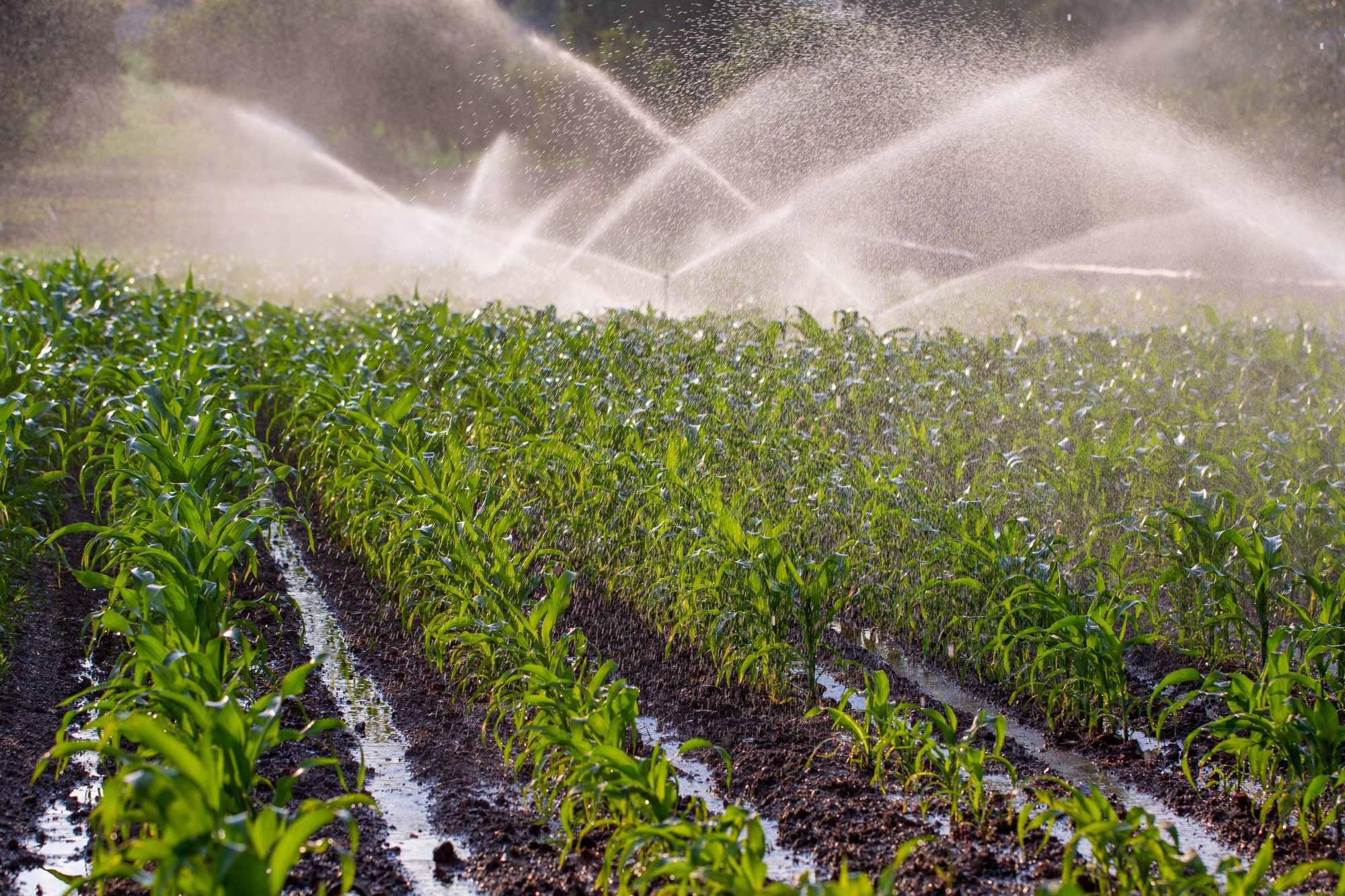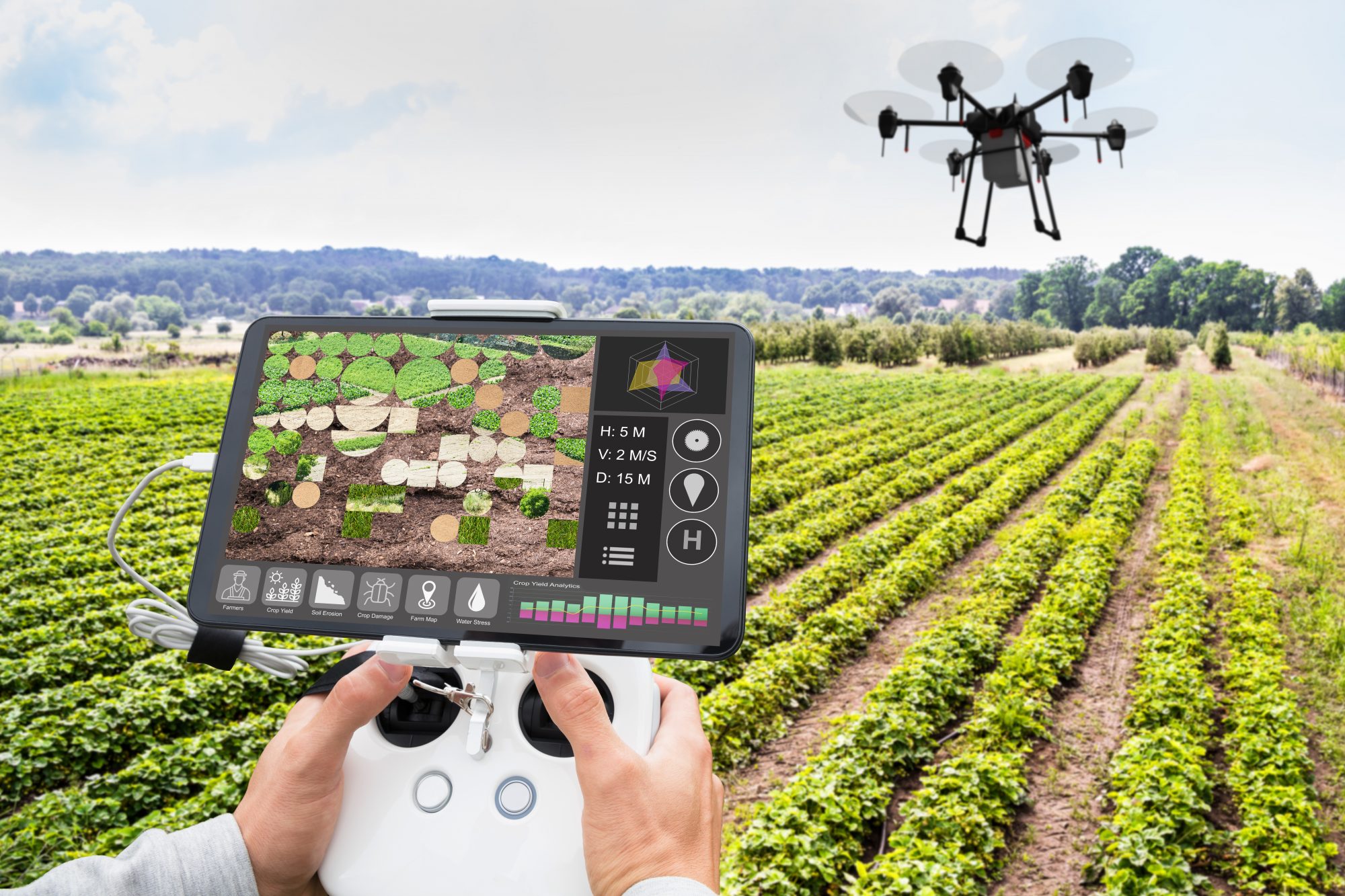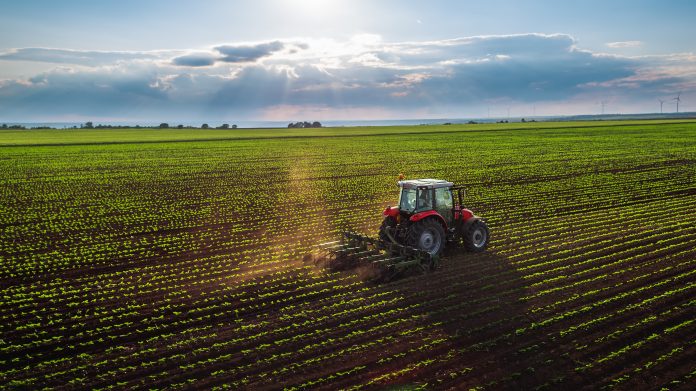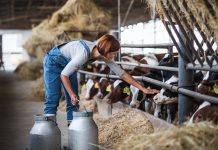EU Green Deal environmental commitments require farmers across the EU to make significant changes in how they work – from reducing their carbon footprints to adopting more sustainable practices
The EU Green Deal environmental commitments aim to tackle climate change, reduce air pollution and protect nature. But can farmers really deliver on this groundbreaking deal? As global temperatures continue to rise, it’s essential that all sectors do their part in achieving sustainability goals. Farmers have a unique opportunity to drive meaningful change – but only if they are given the tools they need to meet the challenge head-on.
In this article, we explore what it will take for farmers to become part of the green transformation that’s needed at an unprecedented scale if Europe is to reach its net zero emissions target by 2050. We’ll look at what new technologies, strategies and incentives might be required for them to succeed in meeting these demands.
EU Green Deal is a groundbreaking initiative to transform the way we interact with our environment
The deal aims to decarbonise the economy while also creating jobs, improving health outcomes and protecting nature at the same time. To accomplish these goals, it advances legislation regarding renewable energy sources, sustainable transport systems and green building standards. In addition, it supports research into new technologies, such as carbon capture storage or green hydrogen production, which can help mitigate some of our current environmental issues.
To ensure success, everyone must work together – governments, businesses, civil society organisations and citizens alike. Farmers are particularly important players in making progress towards meeting the EU’s sustainability goals. As they own much of Europe’s agricultural land, their actions will have far-reaching implications for how we use resources today and in the future. This includes reducing harmful inputs like fertilisers and pesticides; conserving water through improved irrigation practices; rotating crops more often; increasing organic matter content in soils; restoring wetlands; planting trees; managing livestock responsibly; encouraging pasture biodiversity, and more.
Overview of the EU Green Deal environmental commitments
The EU’s Green Deal brings with it a range of environmental commitments and goals, including:
- the promotion of sustainable agriculture;
- green infrastructure;
- circular economy;
- environmental conservation;
- and organic farming practices.
Sustainable agriculture is about reducing agricultural emissions while still producing enough food to meet human needs. This can be achieved through improved agroecological systems that are more resilient to climate change and use fewer resources. Regarding green infrastructure, the EU wants to promote natural habitats such as wetlands and forests, which help mitigate climate change by sequestering carbon dioxide from the atmosphere. Furthermore, they aim to increase biodiversity by protecting endangered species and promoting wildlife corridors between protected areas.
Circular economies are designed to reduce waste production by reusing or recycling materials into new products. The EU has committed to phasing out single-use plastic items and encouraging businesses to invest in greener technologies for manufacturing processes. Finally, environmental conservation efforts focus on preserving natural ecosystems such as rivers, lakes and other bodies of water from pollution caused by heavy industry and urban runoff. Organic farming also plays an important role here since it reduces pesticide usage compared to traditional agriculture methods.
Farmers must implement land-use change strategies
To meet the environmental commitments of the EU Green Deal, farmers must implement land-use change strategies. These strategies involve a combination of conservation practices that aim to reduce negative environmental impacts and improve sustainability.
- Establishing agroforestry systems – Agroforestry is an integrated approach which combines trees with crops or livestock in a mutually beneficial way. This helps create a more diverse, productive and resilient agricultural system.
- Prioritising green infrastructure – this involves creating habitats for native species, such as hedgerows and wildflower meadows, which can help increase biodiversity and provide additional sources of food for pollinators such as bees, butterflies, and moths.
- Promoting crop rotation – Crop rotation is one of the oldest farming techniques known to man; it involves growing different types of crops in succession over time which can lead to improved soil fertility and pest control while reducing reliance on chemical inputs.
- Encouraging organic production – Organic agriculture is a holistic approach which focuses on maintaining healthy soils through reduced tillage, composting and other natural methods without using synthetic fertilisers or pesticides. It also encourages greater diversity regarding plant varieties grown and animal breeds reared, thus increasing long-term resilience against climate change impacts.

Soil management techniques
Soil is a vital component of the environment, and soil management techniques can ensure farmers deliver on their environmental commitments. One such technique is improving soil fertility. This involves using organic matter, mulch or compost to add nutrients back into the soil that has been depleted due to intensive farming practices. Additionally, it also helps with increasing water retention, which can help protect crops from drought conditions.
Another important technique for managing soils is through health management strategies. These involve methods such as crop rotation, cover cropping or intercropping to reduce pest pressures and improve nutrient cycling within the farm system. Healthier soils are better able to retain moisture and provide more beneficial microbial activity, which can further support agricultural productivity.
Carbon sequestration is another key area where farmers need to focus when delivering on their environmental commitments. Through various measures such as no-tillage systems or growing legumes, farmers can increase the amount of carbon stored in their soils by reducing erosion and encouraging healthy root growth belowground. In addition, these methods also help reduce fertiliser runoff which can have damaging impacts on nearby ecosystems.
Finally, preventing soil erosion should be a priority for all farmers. By implementing conservation agriculture principles such as minimum tillage operations or planting strips of grass between fields, they can maintain surface vegetation that slows down rainwater runoff and prevents topsoil loss while providing additional habitats for wildlife species like pollinators. All these approaches should be taken together with regular monitoring so that any changes over time can be tracked and dealt with accordingly.
Agriculture water conservation practices
Water conservation strategies are vital for preserving precious resources, as well as protecting aquatic ecosystems from damage caused by pollution or overuse. Farmers can implement water conservation practices, techniques and methods on their land. The most basic practice farmers should adopt is efficient irrigation systems which ensure that crops receive only the amount of water necessary for optimal growth. Additionally, crop rotation will reduce the need for excessive watering due to differences in soil composition between different types of crops. Covering soils with mulch also helps retain moisture and reduces evaporation from the sun’s rays. By taking these steps, farmers can significantly reduce their water usage while ensuring healthy yields and profits.
Furthermore, there are several other water conservation programs available to assist farmers in reducing their water footprint even further. For example, some local governments may provide incentives such as grants or tax credits to encourage implementing environmentally friendly practices like using rain barrels or drip irrigation systems. There are also many private organisations working with farmers to develop innovative solutions, such as developing low-cost filtration systems that can capture clean rainwater runoff for use during dry spells.
Agricultural biodiversity protection measures
Biodiversity protection measures involve protecting plant species, restoring wildlife habitats, undertaking ecosystem restoration projects, and introducing new species into an area through reintroduction programs. These activities all have a positive effect on global ecosystems and provide benefits such as improved air quality, greater water retention in soils, increased carbon sequestration, increased food production, and better disease control.
Protecting plant species is essential for maintaining healthy ecological systems; by conserving native plants, we create habitats that support wildlife populations which then promote stability within local environments. Wildlife habitat restoration involves creating more suitable conditions to allow endangered or threatened species to live in their natural environment with adequate resources. Ecosystems restoration projects aim to restore degraded land areas by removing invasive species while planting native vegetation and establishing sustainable practices like agroforestry or integrated farming techniques. Finally, reintroducing extinct or locally rare animal and plant species helps maintain genetic diversity in an area which can lead to the long-term sustainability of whole ecosystems.
Climate change mitigation approaches in farming
As part of the Green Deal agenda, farmers must implement measures to mitigate climate change by reducing greenhouse gas emissions while also adapting to its effects through resilient agricultural practices.
Carbon storage is an important tool in mitigating climate change, as it captures and stores carbon dioxide (CO2) from the atmosphere. Carbon sequestration can be achieved through various approaches, including no-till farming, agroforestry, cover crops, organic matter management, and rotational grazing systems. These strategies not only reduce CO2 levels but also help improve soil health and productivity for farmers who use them.
Climate adaptation measures are equally essential in tackling the impact of global warming. Sustainable agriculture techniques such as improved irrigation methods, pest control strategies that minimise chemical inputs, and diversified crop rotation cycles have been shown to increase farms’ resilience against extreme weather events caused by climate change. Additionally, investments in technologies like precision agriculture provide farmers with valuable information about their land to better manage water resources and adapt quickly when conditions vary from year to year.
Finally, sustainable intensification offers another approach to balancing food production goals with environmental protection objectives in Europe’s changing landscape. Farmers can maximise yields while minimising negative impacts on biodiversity through best management practices such as integrated pest management and nutrient management plans designed for specific soils and sites. These conservation tillage systems cover ground throughout the growing season and enhance biological controls that utilise natural predators instead of chemicals to combat pests or weeds.
Renewable energy production guidelines for farmers
Farmers must also ensure they adhere to guidelines for producing renewable energy in a sustainable manner. Renewable energy production requires careful planning and monitoring; however, the rewards are well worth the effort. The main benefit is that it does not rely on finite resources such as fossil fuels like coal or oil; instead, it relies on limitless sources such as solar power, wind power, geothermal heat pumps and hydroelectricity. This makes it more cost-effective and reliable than traditional forms of energy production. Additionally, renewable energy has zero emissions which help reduce global warming by preventing pollution from entering the atmosphere.
To achieve these goals, countries within the European Union must develop specific standards related to renewable energy production. These standards should provide regulations surrounding how much electricity needs to be generated with renewables each year, what types of technology can be used (i.e., photovoltaic systems), how often maintenance needs to occur and when new installations need to occur for targets to be met efficiently. Furthermore, consideration should also be given toward incentivising farmers who choose alternative methods of generating electricity from their land – this could include subsidies for those investing in solar panels or grants for developing innovative technologies such as biomass boilers or small-scale hydropower plants.
Carbon sequestration protocols in agriculture
Carbon sequestration in agriculture helps to capture and store carbon dioxide in soils, vegetation, and other geological formations. In this way, it serves as a tool to reduce greenhouse gas concentrations by trapping or sequestering carbon from the atmosphere.
One method of soil sequestration used by farmers is no-till farming practices. These involve leaving crop residues on fields after harvest rather than ploughing them back into the soil. By doing so, more organic matter can break down over time which increases soil fertility and captures additional carbon dioxide from the atmosphere. Other strategies may include planting cover crops that help to maintain moisture levels in soils and increase natural nutrient cycling processes.
Agricultural land management systems also play an important role in capturing atmospheric carbon through photosynthesis and storage in plant materials such as roots and leaves. For example, incorporating trees onto croplands provides shade which decreases evapotranspiration rates while simultaneously increasing biomass accumulation for long-term soil improvement purposes. Moreover, the use of nitrogen fertilisers should be reduced where possible because they emit nitrous oxide – a powerful greenhouse gas – during their application onto fields.

Farming resource efficiency standards
Resource efficiency involves optimising multiple aspects of farming practices and processes – such as energy efficiency, sustainable production methods, water conservation, land management and waste reduction.
| Standards | Compliance requirements | Benefits |
| Energy efficiency practices | Use renewable sources for power generation; reduce consumption of non-renewable resources; implement efficient equipment in production activities. | Helps reduce greenhouse gas emissions, increases cost savings, and improves operational performance. |
| Sustainable farming practices | Reduce the use of chemical fertilisers and pesticides; pursue organic agriculture techniques when feasible; promote biodiversity by planting native species. | Improves soil health and fertility; protects ecosystems from pollution; preserve natural habitats for wildlife. |
| Water conservation standards | Minimise water usage throughout operations; install rainwater harvesting systems on farms whenever possible. | Enhances water supply availability for future generations; reduces strain on local watersheds and groundwater reserves. |
Taking these measures can help producers comply with current environmental regulations while also allowing them to benefit from cost savings associated with improved efficiency and reduced waste disposal costs. Additionally, implementing resource efficiency standards has numerous long-term benefits that extend beyond compliance requirements – including greater sustainability in agricultural production methods, which leads to healthier soils, cleaner air and water, increased biodiversity levels, better crop yields, fewer pests and disease outbreaks, higher quality food products and enhanced animal welfare conditions in livestock husbandry systems.
Waste reduction protocols for farmers
Farmers must take proactive steps toward implementing sound waste management practices that will significantly reduce waste production and landfill contribution, as well as lower greenhouse gas emissions.
Firstly, farmers should assess their current state of operations regarding waste production and disposal methods. This assessment can be used to identify areas where further efforts could result in improved efficiency and reduced environmental impact. For example, farmers may need to invest more resources into preventing soil degradation or replacing certain chemicals with safer alternatives.
Next, farmers must develop comprehensive plans outlining how they intend to reduce their own wastage while also promoting sustainable practices among other stakeholders such as suppliers and customers. These plans should include measures such as transitioning away from single-use plastics or reducing packaging materials when possible. It would also help if these plans included incentives for others who use the farmer’s products or services so that everyone benefits from adopting greener habits.
Finally, it is important for farmers to monitor their progress on an ongoing basis through regular audits and assessments. Doing so will allow them to track how much waste has been effectively reduced over time, allowing them to make adjustments accordingly if needed.
Pollution control regulations for farmers
Pollution control regulations are essential for farmers to ensure that their operations do not cause excessive air or water pollution. Air and water pollution can have serious consequences both in terms of human health and the environment, so it is important that farms comply with applicable laws and regulations.
When it comes to air pollution control, several different regulations apply depending on where the farm is located. For example, some countries may require farms to use certain types of equipment or technologies to reduce emissions from agricultural activities such as animal husbandry or crop production. Similarly, there may be restrictions on burning wood or other materials which could release pollutants into the atmosphere. In some cases, farmers may need to obtain permits before carrying out any activity which has the potential to produce air pollutants.
Water pollution control also requires adherence to specific regulations. The type of regulation depends largely on local conditions but typically involves measures designed to prevent contamination of surface waters by fertilizers, pesticides and other chemicals used in farming operations; limits on the number of nutrients like nitrogen and phosphorus discharged into rivers and lakes; prevention of erosion caused by overgrazing; and maintenance of riparian zones along waterways. Farmers should take steps to minimise runoff from fields which contain agrichemicals, particularly when these enter sensitive aquatic habitats such as wetlands or coral reefs.
Finally, understanding how these various regulations interact with one another is critical. To this end, farm owners should regularly consult with experts who can advise them regarding their particular situation and help them develop strategies for managing their operations sustainably while meeting all legal requirements related to air and water pollution control.
Agrotech innovations for farmers
Smart irrigation has already proven effective in reducing water usage while still maximising crop yield. By using sensors to determine the exact amount of water needed at any given time, farmers can target their watering efforts more accurately than ever before. This technology also allows farmers to monitor soil moisture levels remotely, helping them reduce labour costs associated with manual monitoring and ensuring they use no more water than necessary.
Agrotech solutions such as drones and artificial intelligence (AI) have revolutionised agricultural production processes by providing accurate data about crops without having to visit each field daily physically. AI-driven analytics platforms allow users to assess conditions such as soil fertility or pest infestations much faster than traditional methods, allowing decisions to be made quickly based on current facts rather than guesswork. Moreover, autonomous farm machines are now capable of performing a variety of tasks like planting seeds or harvesting crops without human intervention – saving cost, energy and manpower significantly.

Finally, agroecology systems provide an invaluable way for farmers to implement sustainable practices into their operations without compromising yields or economic viability. These systems focus on integrating natural resources carefully into production cycles so that crops benefit from natural processes instead of relying solely on chemical inputs. Not only does this reduce reliance on external inputs like fertilisers and pesticides, but it also encourages healthier soils which leads to higher quality produce over longer periods of time – all achievable through careful management of nature’s own resources.
What financial support and incentives are available to farmers?
The EU is offering financial support and incentives for farmers, including green deal funding as well as rural development programs and agricultural subsidies.
Green Deal funding is designed to provide resources to farmers who are dedicated to making their operations more sustainable and eco-friendly. It covers projects such as organic farming, agroforestry, building energy-efficient structures, developing renewable energy sources, and reducing water pollution. It can also be used for research into new technologies or techniques that increase efficiency in production while ensuring sustainability standards are met.
Rural development programs seek to improve economic activity in rural parts of Europe by providing grants and loans to businesses and individuals. These funds can go towards improving infrastructure related to agriculture, forestry management, food processing facilities, marketing campaigns and other activities that promote job creation and economic growth in these areas. Farmers may qualify for special financing opportunities geared towards modernising farm equipment or expanding production with an eye toward sustainability goals set forth by the EU Green Deal.
Finally, the EU provides agricultural subsidies which cover a range of expenses associated with running a farm business, such as fertiliser costs, seed purchases, labour wages and veterinary care for animals kept on the property. Subsidies help ensure that small farms remain viable even when market prices drop below what would otherwise allow them to stay profitable. They also give farmers additional security when investing in initiatives mandated by the green deal since they know there will be some form of compensation if their efforts fail to yield desired results over time.
Enforcement and monitoring mechanisms for the EU Green Deal environmental commitments
To ensure that environmental commitments are met, enforcement and monitoring mechanisms must be implemented as part of the overall policy package.
Enforcement measures involve setting up systems for compliance and penalties for non-compliance. This could include establishing reporting requirements and oversight processes or introducing fines for non-adherence. Monitoring mechanisms such as satellite imagery can help track progress towards achieving environmental objectives while also providing data to enforce regulatory regimes.
To be able to monitor and enforce compliance with EU green policies effectively, the following key elements should form part of the process:
- Establishing clear metrics against which performance can be measured;
- Developing effective communication channels between stakeholders;
- Introducing incentives for good environmental behaviour;
- Ensuring adequate resources are available for monitoring efforts.
When these elements come together, it creates an environment where farmers can have confidence that their actions will be monitored and enforced accordingly. By having reliable feedback loops in place, farmers can take ownership of their own sustainability journey, knowing how their decisions affect both society and the environment. Moreover, this helps create accountability across all actors involved in making sure sustainable practices become mainstream within Europe’s agricultural sector.
What are the implications of the EU Green Deal for farmers in other countries?
The international implications of the EU Green Deal are wide-reaching. With its potential to bring about positive environmental change, it’s no wonder that farmers in other countries have begun to take notice. But what exactly does the deal mean for them? What implications arise from adopting the green policies enshrined within it?
Firstly, there is a clear benefit regarding sustainability and eco-friendly practices. Farmers who sign up for the EU Green Deal will be expected to adhere to certain environmental standards; these may include reducing their use of pesticides or limiting water consumption on their farms. By taking part in this initiative, they can improve their farm’s efficiency while also helping protect the environment. This could potentially lead to increased profits as well as improved public opinion about agricultural practices worldwide.
Secondly, participating in the EU Green Deal could open new markets for farmers outside Europe. As more countries adopt environmentally friendly farming methods and regulations, businesses outside the European Union may be better equipped to meet customer demands abroad. Additionally, those involved in foreign trade may see greater opportunities if they can demonstrate compliance with global standards set by organisations such as the World Trade Organisation (WTO).
Thirdly, farmers should consider how they can collaborate with each other and share resources when implementing green initiatives outlined by the EU Green Deal. International cooperation between different nations’ agricultural sectors could help reduce costs associated with adapting production processes and technologies needed to comply with green regulations. It would also provide a platform for exchanging knowledge on sustainable farming techniques, which could ultimately benefit all participants involved.
Are there any penalties for farmers not complying with the EU Green Deal?
The question of penalties for farmers who do not comply with the EU Green Deal is a crucial one. Firstly, fines may be imposed on those farmers who don’t adhere to the rules laid down by the EU Green Deal. These could range from relatively small amounts to much larger sums which must be paid immediately or over time as part of an extended payment plan. Additionally, some countries may choose to implement other forms of punishment, such as restrictions on trading or potential jail sentences for more serious offences.
In addition to financial and legal consequences, farmers can also face reputational damage if found guilty of breaking any rules outlined in the EU Green Deal. This could include negative press coverage or public criticism, making it harder for them to continue doing business successfully in their local communities. Reputation management will become increasingly important going forward, so it pays off for farmers to ensure they’re sticking to all necessary regulations.
What are the long-term benefits of complying with the EU Green Deal environmental commitments?
Like a phoenix from the ashes, complying with the environmental commitments of the EU Green Deal can bring long-term benefits for farmers. First and foremost, farmers who comply with the EU Green Deal will help sustainably manage their land use and production processes to reduce greenhouse gas emissions. This kind of stewardship over natural resources not only helps ensure healthy ecosystems but also serves as an example for other agricultural operations worldwide. As a result, compliant farms could likely see improved customer relations thanks to increased trust stemming from sustainable practices.
In addition, adopting environmentally friendly methods could lead to financial incentives such as tax breaks or subsidies provided by governments or organisations like the European Commission. These rewards could provide more leeway when deciding on investments into new technologies or equipment designed to reduce energy consumption or improve efficiency in resource management. By investing wisely now, farmers may be able to reap greater profits down the road.
Finally, compliance with the EU Green Deal brings about social responsibility, demonstrating a commitment to protecting nature and safeguarding food security for future generations. Being part of something larger than oneself gives people purpose and pride – both important elements necessary for any successful business venture. Embracing these values can give farmers access to a wider pool of customers looking for ethically sourced products while simultaneously boosting public confidence in their efforts towards better environmental protection measures.











